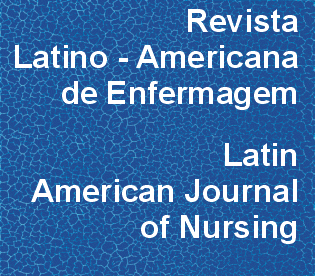Prevalence of metabolic components in university students
DOI:
https://doi.org/10.1590/0104-1169.0129.2514Abstract
OBJECTIVE: to identify the frequency of components of Metabolic Syndrome (MetS) among university students. METHOD: descriptive study with 550 students, from various courses run by a public university. The socioeconomic data, lifestyle, and components of MetS were filled out using a questionnaire. Blood sample collection was undertaken in the university itself by a contracted clinical analysis laboratory. RESULTS: 66.2% were female, with a mean age of 22.6±4.41; 71.7% were sedentary; 1.8% stated that they smoke; and 48.5% were classified as at medium risk for alcoholism. 5.8% had raised abdominal circumference and 20.4% had excess weight; 1.3% and 18.9% had raised fasting blood glucose levels and triglycerides, respectively; 64.5% had low HDL cholesterol and 8.7% had blood pressure levels compatible with borderline high blood pressure. Thus, of the sample, 64.4% had at least one component for MetS; 11.6% had two, and 3.5% had three or more. CONCLUSION: a significant proportion of the population already has the components for metabolic syndrome, and this profile reinforces the importance of early diagnosis so as to reduce the risk of developing chronic comorbidities.Downloads
Download data is not yet available.
Downloads
Published
2014-12-01
Issue
Section
Original Articles
License
RLAE’s authorship concept is based on the substantial contribution by each of the individuals listed as authors, mainly in terms of conceiving and planning the research project, collecting or analyzing and interpreting data, writing and critical review. Indication of authors’ names under the article title is limited to six. If more, authors are listed on the online submission form under Acknowledgements. The possibility of including more than six authors will only be examined on multicenter studies, considering the explanations presented by the authors.Including names of authors whose contribution does not fit into the above criteria cannot be justified. Those names can be included in the Acknowledgements section.
Authors are fully responsible for the concepts disseminated in their manuscripts, which do not necessarily reflect the editors’ and editorial board’s opinion.
How to Cite
Prevalence of metabolic components in university students . (2014). Revista Latino-Americana De Enfermagem, 22(6), 1041-1047. https://doi.org/10.1590/0104-1169.0129.2514



